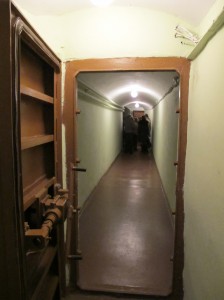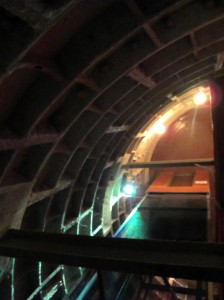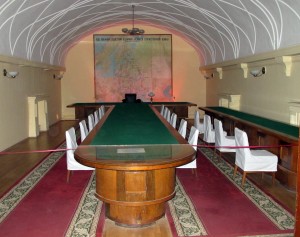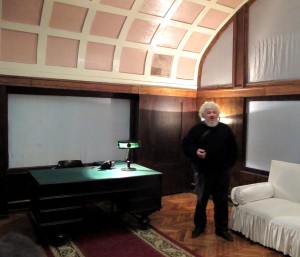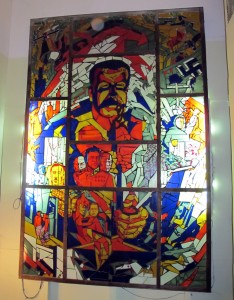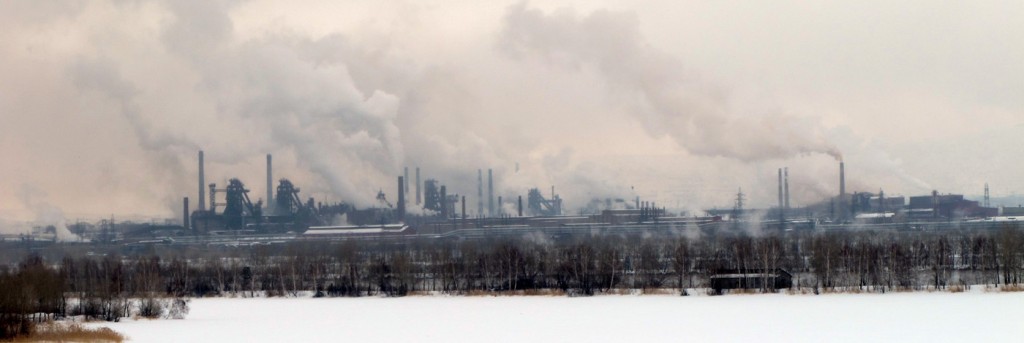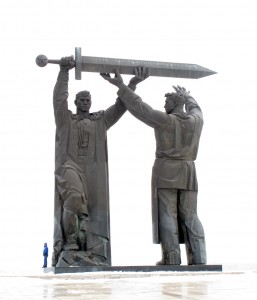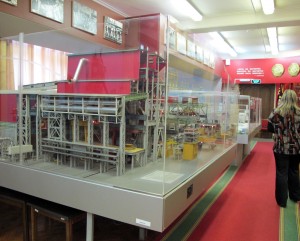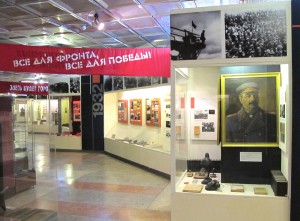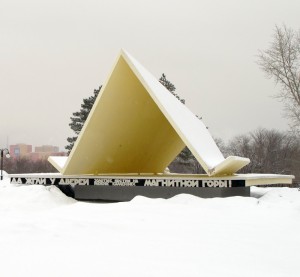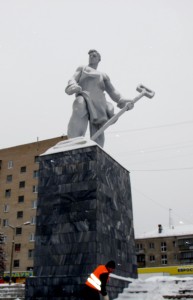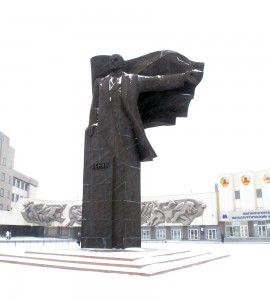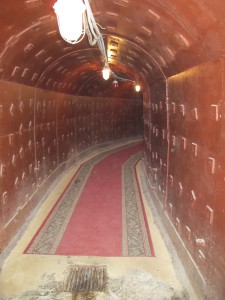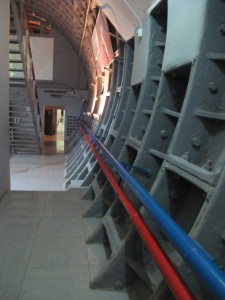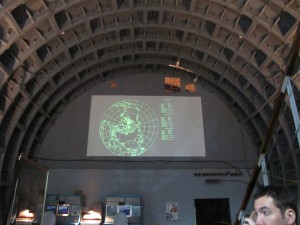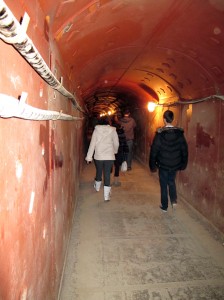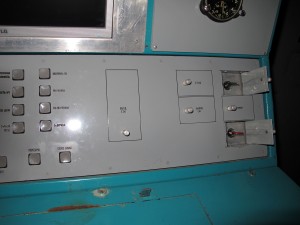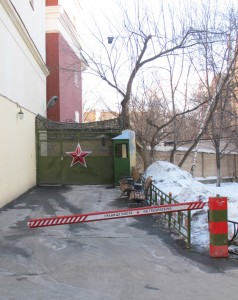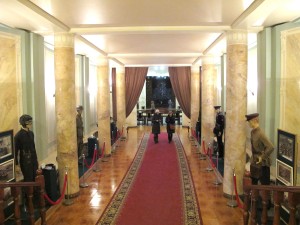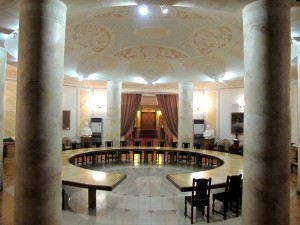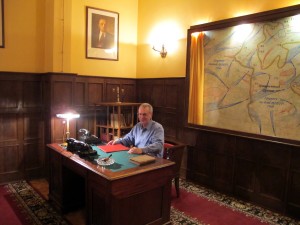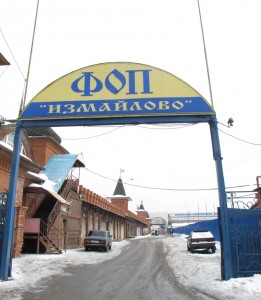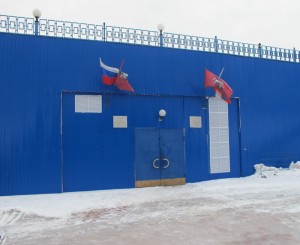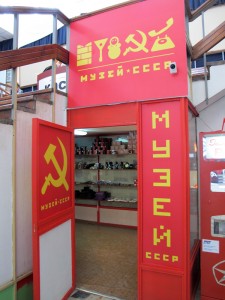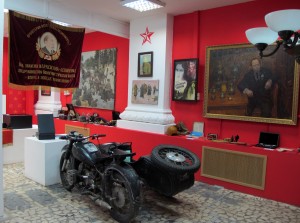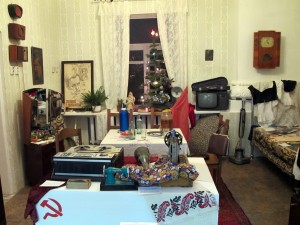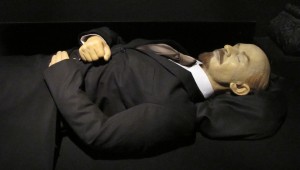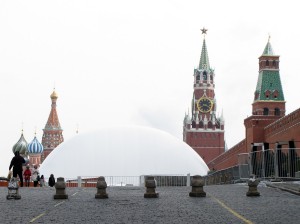| I am in Samara, where I have successfully infiltrated the Stalin Bunker.
The bunker was build in great secrecy and in great haste in 1941, when Moscow was in danger and Kuibyshev (aka Samara) was the fallback Soviet capital. But Moscow survived and Stalin chose to stay in the city even during its most dangerous moments, so the bunker was never actually used in anger. The bunker entrance is hidden behind an innocuous steel door. You then head down 8 flights of stairs, mounted in an armored steel cylinder, to reach the top of the bunker proper. The bunker then occupies seven levels, with the “Stalin” level at the very bottom, 190 steps from the surface. The current decor is a modern restoration of what the long ago Stalin headquarters might have looked like. There is a large formal conference room, with a giant war map. Opposite is a mid-sized office, with a giant “Stalin Desk”. All ready for the great man, should he suddenly reappear on the scene. The Bunker authorities make heavy play on the Stalin name, although he probably never actually visited. The authorities also carefully preserve a distinctly Stalinist style towards visitors. They only admit pre-arranged groups and do not allow individuals. It is possible to pay for of an entire group of 20, but you still need to book in advance and since the bunker authorities don’t have an email or speak English, you typically need to work through a tour agency (more below). I was lucky enough to arrive as a group of fourteen young students and their teacher were about to enter. I was initially given head-shakes and my entrance fee turned away. But after a bit, after there were some discussions in Russian, I was deemed harmless and allowed to tag along with the student group. This meant I needed to wait patiently through several very thorough lectures in Russian on the history of the bunker, but that was a small price to pay to get into a tour. On the way out, make sure to admire the modern Stalin-themed stained glass window near the entrance. Practicalities: The bunker is at 57 Ul. Frunze (53.196710, 50.098201), under the Academy of Culture. It has its own separate entrance around the back. Nominal hours are 11-1 and 2-3, Mon-Fri. |
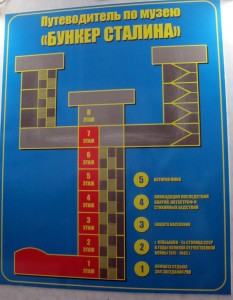
|
I emailed three tour agencies to try to arrange a visit (Samara Tour, Y-RA, Samara InTour) without success. Eventually I reached a company “holiday-tours@mail.ru” who were willing to set up a tour for me, but at the group rate of 5000 Rubles, which seemed a little stiff.
The best bet is probably to try to join on to an existing tour. There seemed to be groups going through roughly hourly, on the hour, when I was there. It seems that if they are under the group size limit (which I think is 20 people) and you seem harmless, they may let you tag along. I paid 80 Rubles for my visit, but I may have lucked into a student discount.
